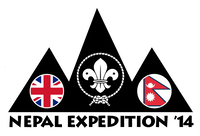Annapurna Base Camp
This is a classic trek, visiting the site of the base camp used by expeditions attempting the massive south face of Annapurna I. The Sanctuary was discovered by Jimmy Roberts in 1957, and first used as a base camp by Chris Bonington's expedition in 1970. The Annapurna Sanctuary is a huge cirque of some of the world's highest mountains, culminating in the awesome South Face of Annapurna. The area encloses the Annapurna and Machhapuchhare Base Camps and is itself a hidden pocket of meadow moraine and glacier, ringed by magnificent sheer-walled peaks: the fishtail Machhapuchhare (6992m), Annapurna I (8091m), South Annapurna (7273m) and Gangapurna (7454m). Traditionally, no women or low-caste people were allowed into the sanctuary, impure foods like meat, eggs and garlic were forbidden, and hunting and butchering were prohibited. The Sanctuary is still an idyllic place, a haven for wildlife and flowers, visited only by a few shepherds who bring their flocks up to graze summer meadows, and it is believed to be the sacred abode of the gods of the native Gurung people.
The trek begins at Nayapul, after a short drive from the beautiful lakeside town of Pokhara, and passes through many Gurung and Magar villages, such as Ghandruk, which is the largest Gurung village in Nepal, where the male members of the local community have sacrificed their lives to serve with the Gurkha Armies and security forces around the world. The trail moves along ridges where stunning panoramic views disclose spectacular mountain-scapes. Passing through picturesque rhododendron, daphne and bamboo forests, over grassy meadows, between incredibly narrow gorges, and up very steep and rocky steps, the trail follows the Modi Khola river valley after passing through Chomrong. From then on there is a single track corridor as far as the 'gate' to the Sanctuary itself, which is flanked by the twin peaks of Machhapuchhare and Hiunchuli, and after passing through this entrance, trekkers are usually left speechless by the sheer magnificence of the natural amphitheatre of ice-bound peaks.
After three days spent exploring this magical place and visiting Annapurna Base Camp, and Machhapuchhare Base Camp, the trail retraces its path down the Modi Khola valley before taking a different route back to Pokhara, through Dhampus Phedi, for some relaxation and a night's rest, prior to beginning a couple of days' exciting rafting on the Seti River. The set in point for this is Damauli, a short drive from Pokhara, and the rafting experience will include rapids up to Grade III+. Overnight riverside camps with possible camp fires add another dimension to the rafting experience. On leaving the Seti River at Ghaigat, at the confluence of the Seti and Trisuli rivers, there will be a scenic bus journey back to the heaving metropolis of Kathmandu.
Itinerary
- Day 1
- Arrive Kathmandu and transport to Hotel
- Day 2
- Kathmandu, preparing for trekking
- Day 3
- Fly to Pokhara (820m) and overnight
- Day 4
- Drive to Nayapul (1070m) and trek to Ghandrul (1940m)
- Day 5
- Trek to Chhomrong (2170m)
- Day 6
- Trek to Doban (2505m)
- Day 7
- Trek to Machhapuchhare Base Camp (MBC) (3700m)
- Day 8
- Rest day in MBC
- Day 9
- Trek to Annapurna Base Camp (ABC) (4130m)
- Day 10
- Trek to Bamboo (2335m)
- Day 11
- Trek to Jhinu Danda (1780m) via Chhomrong
- Day 12
- Trek to Tolka (1700m) or Pothana (1900m)
- Day 13
- Trek to Phedi (1130m) and drive back to Pokhara
- Day 14
- Free Time in Pokhara (some sightseeing option)
- Day 15
- Drive to back to Damauli and start rafting on Seti River
- Day 16
- Raft to Gaighat and drive to Chitwan
- Day 17
- Chitwan; jungle adventure
- Day 18
- Late morning drive back to Kathmandu and rest of day free
- Day 19
- Kathmandu Morning Sightseeing with joint group
- Day 20
- Visit to EPHC and free time/shopping at afternoon
- Day 21
- Transport to airport for departure


